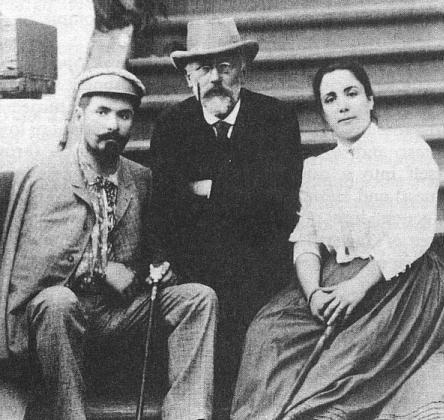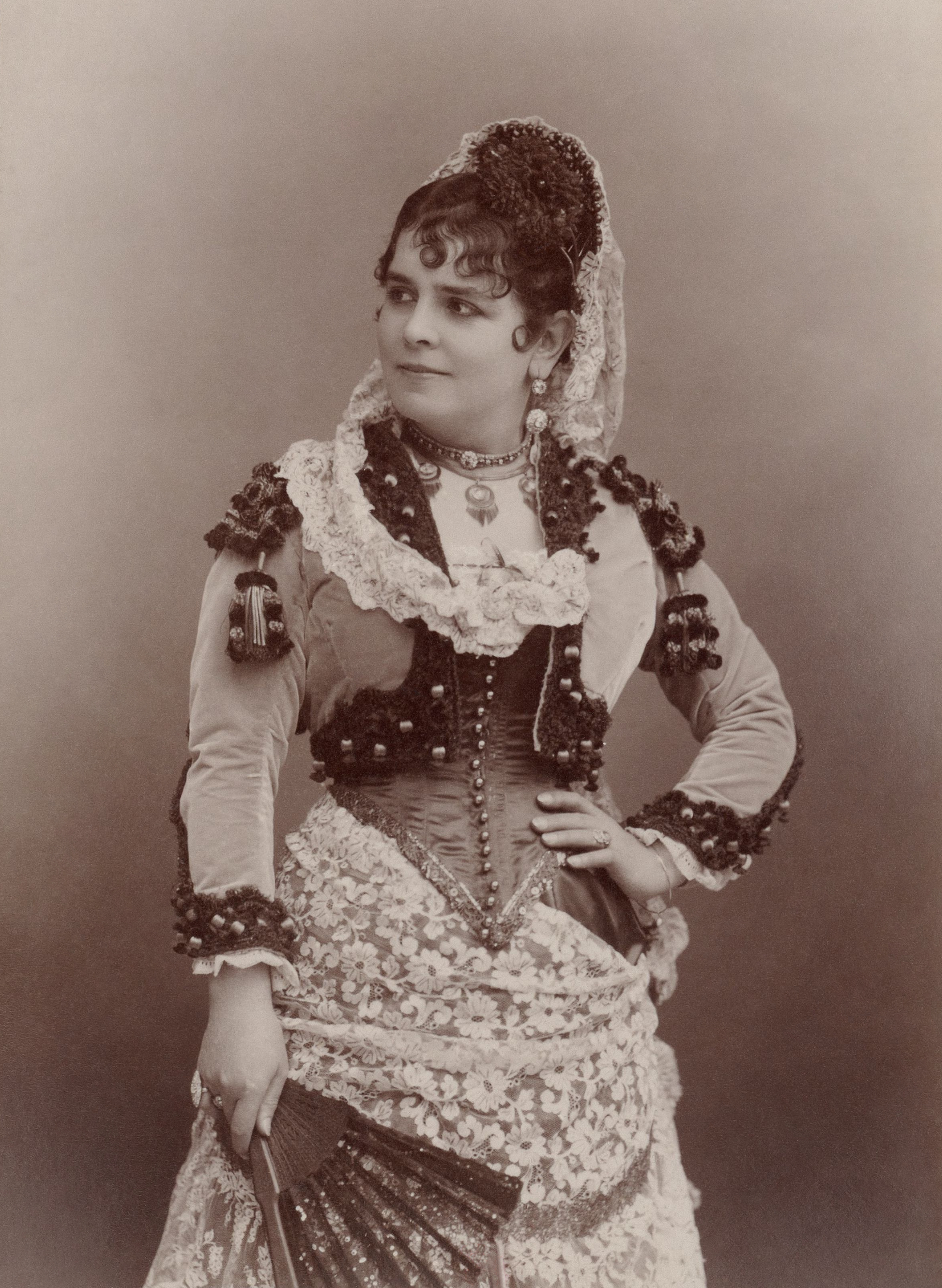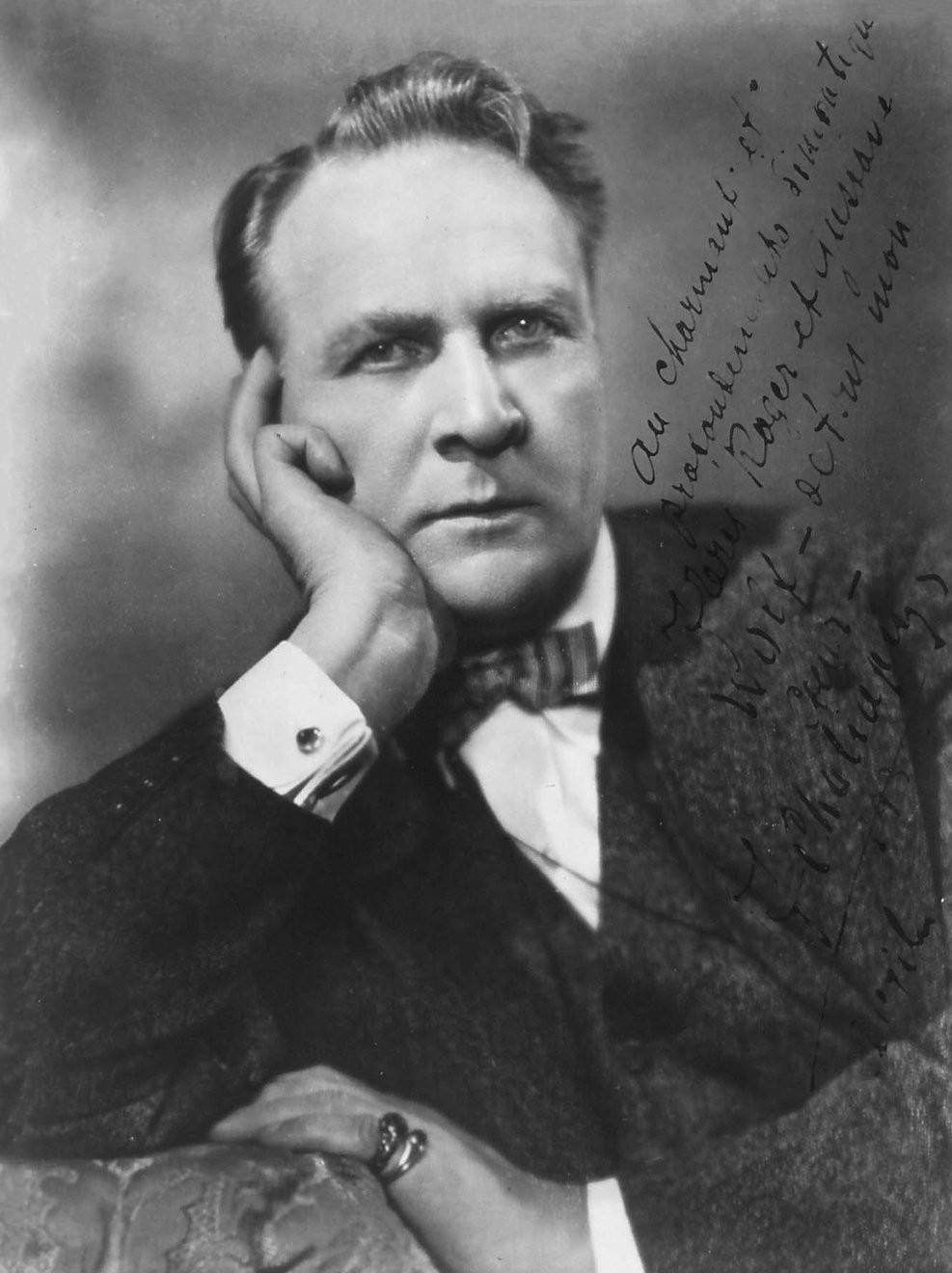|
Leonid Sobinov
Leonid Vitalyevich Sobinov (russian: Леони́д Вита́льевич Со́бинов, 7 June S 26 May1872 – 14 October 1934) was an Imperial Russian operatic tenor. His fame continued unabated into the Soviet era, and he was made a People's Artist of the RSFSR in 1923. Sobinov's voice was lyrical in size and tone, and it was employed with discerning taste and excellent musicianship. Biography Leonid Sobinov was born in Yaroslavl, into the family of the lower middle-class trade officer Vitaly Vasilyevich Sobinov. The period of his childhood was apparently happy and calm. Sobinov's mother, who died early, was a keen singer, and due to her inspiration, he began singing himself. In 1881, at the age of nine, he entered a boys' school, graduating in 1890 with a silver medal. As a schoolboy, he had played the guitar as well as joining a local choir. Sobinov enrolled in a university course in Moscow. This led to a degree in law, which he received in 1894. After university, Sobi ... [...More Info...] [...Related Items...] OR: [Wikipedia] [Google] [Baidu] |
Yaroslavl
Yaroslavl ( rus, Ярослáвль, p=jɪrɐˈsɫavlʲ) is a city and the administrative center of Yaroslavl Oblast, Russia, located northeast of Moscow. The historic part of the city is a World Heritage Site, and is located at the confluence of the Volga and the Kotorosl rivers. It is part of the Golden Ring, a group of historic cities northeast of Moscow that have played an important role in Russian history. Population: Geography Location The city lies in the eastern portion of Yaroslavl Oblast. The nearest large towns are Tutayev ( to the northwest), Gavrilov-Yam ( to the south), and Nerekhta ( to the southeast). The historic center of Yaroslavl lies to the north of the mouth of the Kotorosl River on the right bank of the larger Volga River. The city's entire urban area covers around and includes a number of territories south of the Kotorosl and on the left bank of the Volga. With nearly 600,000 residents, Yaroslavl is, by population, the largest town on the Volga unt ... [...More Info...] [...Related Items...] OR: [Wikipedia] [Google] [Baidu] |
Lohengrin (opera)
''Lohengrin'', WWV 75, is a Romantic opera in three acts composed and written by Richard Wagner, first performed in 1850. The story of the eponymous character is taken from medieval German romance, notably the '' Parzival'' of Wolfram von Eschenbach, and its sequel ''Lohengrin'', itself inspired by the epic of '' Garin le Loherain''. It is part of the Knight of the Swan legend. The opera has inspired other works of art. King Ludwig II of Bavaria named his castle Neuschwanstein Castle after the Swan Knight. It was King Ludwig's patronage that later gave Wagner the means and opportunity to complete, build a theatre for, and stage his epic cycle '' Der Ring des Nibelungen''. He had discontinued composing it at the end of Act II of ''Siegfried'', the third of the ''Ring'' tetralogy, to create his radical chromatic masterpiece of the late 1850s, ''Tristan und Isolde'', and his lyrical comic opera of the mid-1860s, ''Die Meistersinger von Nürnberg''. The most popular and recogn ... [...More Info...] [...Related Items...] OR: [Wikipedia] [Google] [Baidu] |
Werther
''Werther'' is an opera (''drame lyrique'') in four acts by Jules Massenet to a French libretto by Édouard Blau, Paul Milliet and Georges Hartmann (who used the pseudonym Henri Grémont). It is loosely based on Goethe's epistolary novel ''The Sorrows of Young Werther'', which was based both on fact and on Goethe's own early life. Earlier examples of operas using the story were made by Kreutzer (1792) and Pucitta (1802). Milnes R. Werther. In: ''The New Grove Dictionary of Opera''. Macmillan, London and New York, 1997. Performance history Massenet started composing ''Werther'' in 1885, completing it in 1887. He submitted it to Léon Carvalho, the director of the Paris Opéra-Comique, that year, but Carvalho declined to accept it on the grounds that the scenario was too serious. With the disruption of the fire at the Opéra-Comique and Massenet's work on other operatic projects (especially '' Esclarmonde''), it was put to one side, until the Vienna Opera, pleased with the ... [...More Info...] [...Related Items...] OR: [Wikipedia] [Google] [Baidu] |
Martha (opera)
''Martha, oder Der Markt zu Richmond'' (''Martha, or The Market at Richmond'') is a ''romantic comic'' opera in four acts by Friedrich von Flotow set to a German libretto by and based on a story by Jules-Henri Vernoy de Saint-Georges. Flotow had composed the first act of a ballet, ''Harriette, ou la servante de Greenwiche'', derived from a text by Saint-Georges, for the ballerina Adèle Dumilâtre. This was first performed by the Paris Opera Ballet at the Salle Le Peletier on 21 February 1844. The time available for the composition was short, so the second and third acts were assigned, respectively, to Friedrich Burgmüller and Édouard Deldevez. The opera ''Martha'' was an adaptation of this ballet. Critical appreciation According to Gustav Kobbé, ''Martha'', though written by a native of Mecklenburg and first performed in Vienna, is French in character and elegance. Flotow was French in his musical training, as were the origins of both the plot and the score of this work, ... [...More Info...] [...Related Items...] OR: [Wikipedia] [Google] [Baidu] |
Pyotr Ilyich Tchaikovsky
Pyotr Ilyich Tchaikovsky , group=n ( ; 7 May 1840 – 6 November 1893) was a Russian composer of the Romantic music, Romantic period. He was the first Russian composer Music of Pyotr Ilyich Tchaikovsky, whose music would make a lasting impression internationally. He wrote some of the most popular concert and theatrical music in the current classical repertoire, including the ballets ''Swan Lake'' and ''The Nutcracker'', the ''1812 Overture'', his Piano Concerto No. 1 (Tchaikovsky), First Piano Concerto, Violin Concerto (Tchaikovsky), Violin Concerto, the ''Romeo and Juliet (Tchaikovsky), Romeo and Juliet'' Overture-Fantasy, several Symphonies by Pyotr Ilyich Tchaikovsky, symphonies, and the opera ''Eugene Onegin (opera), Eugene Onegin''. Although musically precocious, Tchaikovsky was educated for a career as a civil servant as there was little opportunity for a musical career in Russia at the time and no system of public music education. When an opportunity for such an education ... [...More Info...] [...Related Items...] OR: [Wikipedia] [Google] [Baidu] |
Nikolay And Medea Figner
Nikolay Figner (1857–1918), lyric tenor, and Medea Figner (1859–1952), mezzo-soprano, later soprano, were a husband-and-wife team of opera singers active in Russia between 1889 and 1904. Medea was Italian-born (her original surname was Mei) but she became completely Russianized after marrying Nikolay. They had separate careers before their wedding, and again after their divorce in 1904, but during the 15 years of their marriage they almost always sang in the same performances. They created the main tenor and soprano roles in two operas by Pyotr Ilyich Tchaikovsky – '' The Queen of Spades'' and ''Iolanta'' – and appeared in a number of other important Russian musical premieres. Nikolay Figner Nikolay Nikolayevich Figner was born in Nikiforovka, near Kazan, on 9/21 February 1857. He was a brother of the famous "People's Will" revolutionary, Vera Figner (1852–1942). He joined the Russian Navy as a midshipman, and rose to the rank of lieutenant, retiring in 1881 to study ... [...More Info...] [...Related Items...] OR: [Wikipedia] [Google] [Baidu] |
Leonid Sobinov
Leonid Vitalyevich Sobinov (russian: Леони́д Вита́льевич Со́бинов, 7 June S 26 May1872 – 14 October 1934) was an Imperial Russian operatic tenor. His fame continued unabated into the Soviet era, and he was made a People's Artist of the RSFSR in 1923. Sobinov's voice was lyrical in size and tone, and it was employed with discerning taste and excellent musicianship. Biography Leonid Sobinov was born in Yaroslavl, into the family of the lower middle-class trade officer Vitaly Vasilyevich Sobinov. The period of his childhood was apparently happy and calm. Sobinov's mother, who died early, was a keen singer, and due to her inspiration, he began singing himself. In 1881, at the age of nine, he entered a boys' school, graduating in 1890 with a silver medal. As a schoolboy, he had played the guitar as well as joining a local choir. Sobinov enrolled in a university course in Moscow. This led to a degree in law, which he received in 1894. After university, Sobi ... [...More Info...] [...Related Items...] OR: [Wikipedia] [Google] [Baidu] |
Carmen
''Carmen'' () is an opera in four acts by the French composer Georges Bizet. The libretto was written by Henri Meilhac and Ludovic Halévy, based on the novella of the same title by Prosper Mérimée. The opera was first performed by the Opéra-Comique in Paris on 3 March 1875, where its breaking of conventions shocked and scandalised its first audiences. Bizet died suddenly after the 33rd performance, unaware that the work would achieve international acclaim within the following ten years. ''Carmen'' has since become one of the most popular and frequently performed operas in the classical canon; the " Habanera" from act 1 and the "Toreador Song" from act 2 are among the best known of all operatic arias. The opera is written in the genre of ''opéra comique'' with musical numbers separated by dialogue. It is set in southern Spain and tells the story of the downfall of Don José, a naïve soldier who is seduced by the wiles of the fiery gypsy Carmen. José abandons his childho ... [...More Info...] [...Related Items...] OR: [Wikipedia] [Google] [Baidu] |
La Traviata
''La traviata'' (; ''The Fallen Woman'') is an opera in three acts by Giuseppe Verdi set to an Italian libretto by Francesco Maria Piave. It is based on '' La Dame aux camélias'' (1852), a play by Alexandre Dumas ''fils'' adapted from his own 1848 novel. The opera was originally titled ''Violetta'', after the main character. It was first performed on 6 March 1853 at La Fenice opera house in Venice. Piave and Verdi wanted to follow Dumas in giving the opera a contemporary setting, but the authorities at La Fenice insisted that it be set in the past, "c. 1700". It was not until the 1880s that the composer's and librettist's original wishes were carried out and " realistic" productions were staged. ''La traviata'' has become immensely popular and is among the most frequently performed of all operas. Composition history For Verdi, the years 1851 to 1853 were filled with operatic activity. First, he had agreed with the librettist Salvadore Cammarano on a subject for what ... [...More Info...] [...Related Items...] OR: [Wikipedia] [Google] [Baidu] |
Lakmé
''Lakmé'' is an opera in three acts by Léo Delibes to a French libretto by Edmond Gondinet and Philippe Gille. The score, written from 1881 to 1882, was first performed on 14 April 1883 by the Opéra-Comique at the (second) Salle Favart in Paris, with stage decorations designed by Auguste Alfred Rubé and Philippe Chaperon (act 1), Eugène Carpezat and (Joseph-)Antoine Lavastre (act 2), and Jean-Baptiste Lavastre (act 3). Set in British India in the mid-19th century, ''Lakmé'' is based on Théodore Pavie's story "Les babouches du Brahmane" and the novel ' by Pierre Loti. Gondinet proposed it as a vehicle for the American soprano Marie van Zandt. The opera includes the popular Flower Duet ("Sous le dôme épais") for a soprano and mezzo-soprano, performed in act 1 by Lakmé, the daughter of a Brahmin priest, and her servant Mallika. [...More Info...] [...Related Items...] OR: [Wikipedia] [Google] [Baidu] |
Mazeppa (opera)
''Mazeppa'', properly ''Mazepa'' (russian: Мазепа ), is an opera in three acts (six scenes) by Pyotr Ilyich Tchaikovsky. The libretto was written by Victor Burenin and is based on Pushkin's poem '' Poltava'', part of the cultural legacy of Mazeppa. ''Mazeppa'' is a blood-thirsty tale of crazy love, abduction, political persecution, execution, and vengeful murder. The action takes place in Ukraine at the beginning of the 18th century. The protagonists are the historical figures Ivan Stepanovych Mazeppa (c. 1640–1709), the Hetman of the Ukrainian Cossacks, and Vasyl Leontiyovych Kochubey (c.1640–1708), a very prosperous Ukrainian nobleman and statesman. Composition history The opera was composed between June 1881 and April 1883. ''Mazeppa''s libretto was based on '' Poltava'', a narrative poem by Alexander Pushkin. Pushkin based his story on historical events at Poltava, the battle where Tsar Peter the Great defeated Swedish King Charles XII. Pushkin took some c ... [...More Info...] [...Related Items...] OR: [Wikipedia] [Google] [Baidu] |
Feodor Chaliapin
Feodor Ivanovich Chaliapin ( rus, Фёдор Ива́нович Шаля́пин, Fyodor Ivanovich Shalyapin, ˈfʲɵdər ɪˈvanəvʲɪtɕ ʂɐˈlʲapʲɪn}; April 12, 1938) was a Russian opera singer. Possessing a deep and expressive bass voice, he enjoyed an important international career at major opera houses and is often credited with establishing the tradition of naturalistic acting in his chosen art form. During the first phase of his career, Chaliapin endured direct competition from three other great basses: the powerful (1869–1942), the more lyrical (1871–1948), and Dmitri Buchtoyarov (1866–1918), whose voice was intermediate between those of Sibiriakov and Kastorsky. The fact that Chaliapin is far and away the best remembered of this magnificent quartet of rival basses is a testament to the power of his personality, the acuteness of his musical interpretations, and the vividness of his performances. Spelling note He himself spelled his surname, French-style ... [...More Info...] [...Related Items...] OR: [Wikipedia] [Google] [Baidu] |




.jpg)




